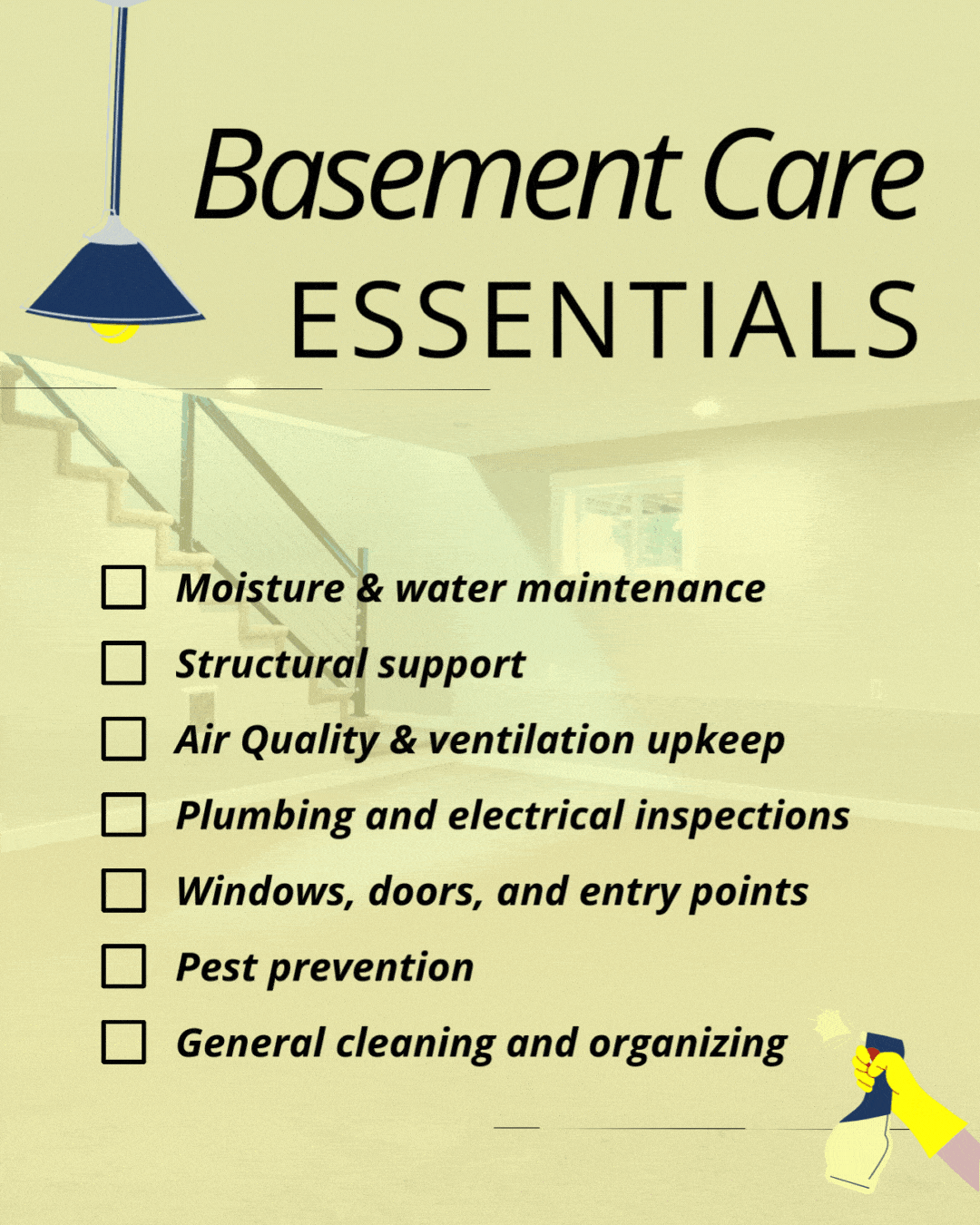A house with a basement offers valuable extra space, but it also comes with unique maintenance needs. Basements are more prone to moisture issues, structural concerns, and hidden problems that can quickly lead to costly repairs if ignored. Whether you use your basement for storage, living space, or a utility area, staying on top of regular checks is key to protecting your home’s safety and value.
This essential checklist covers practical steps you can take to spot potential issues early, prevent common basement problems, and know when it’s time to call in a professional.
Watch for Signs of Moisture and Water Issues
Moisture is one of the most common and damaging problems in any house with a basement. Regular inspections can help you catch issues before they worsen.
Even a small leak or area of dampness can lead to mold growth, structural damage, or ruined belongings.
- Look for visible water stains on walls, floors, or ceilings. Discoloration or peeling paint often points to hidden leaks.
- Check for damp or musty smells. Persistent odors, especially after rain, are warning signs of moisture buildup.
- Inspect around the foundation for pooling water after storms. If water collects near the exterior walls, it may seep into your basement.
- Test the sump pump. Pour a bucket of water into the pit to ensure it activates and drains properly. This is crucial before heavy rainfall.
- Check gutters and downspouts. Make sure they direct water at least five feet away from the foundation. Clogged gutters can cause overflow and basement leaks.

Look for Structural Red Flags
Structural issues in basements can affect your entire house. Cracks and shifting walls may seem minor but could indicate serious foundation problems.
- Examine walls for cracks. Hairline cracks are common, but ones wider than a quarter-inch or that grow over time need professional evaluation.
- Look for bowing or bulging walls. This often signals external pressure from saturated soil or drainage issues.
- Check for uneven floors. If the basement floor slopes or has soft spots, it could point to settling or structural instability.
- Inspect support beams and columns. Rusted metal supports or wooden beams showing signs of rot should be addressed immediately.
Check Air Quality and Ventilation
A basement’s enclosed space makes it prone to stale air, high humidity, and poor ventilation. Addressing air quality not only prevents mold but also improves the comfort of the space.
- Use a hygrometer to monitor humidity levels. Keeping humidity between 30-50% reduces the chance of mold growth.
- Run a dehumidifier during humid months or if you notice condensation on walls or windows.
- Inspect ventilation vents to ensure they aren’t blocked by furniture, insulation, or stored items.
- Pay attention to lingering odors or condensation on surfaces, which indicate poor airflow or hidden moisture.
Inspect Plumbing and Electrical Systems
Basements often house essential systems, making regular checks crucial for safety and functionality.
- Check exposed pipes for leaks, rust, or condensation. Even a slow drip can cause water damage over time.
- Inspect water heaters and laundry appliances for pooling water or corrosion near connections.
- Test electrical outlets and switches. If any feel warm or cause lights to flicker, consult an electrician.
- Look for frayed or exposed wiring. Damaged wires pose fire hazards and should be repaired promptly.
- Ensure electrical panels are dry and accessible. Avoid storing items too close to panels for safety.
Seal Windows, Doors, and Entry Points
Basement windows and doors are common entry points for moisture, drafts, and pests. Sealing gaps protects against multiple issues at once.
- Inspect window seals and caulking. Reapply caulk if you see cracks, gaps, or peeling.
- Check window wells for debris and ensure covers are secure to prevent water pooling.
- Make sure basement doors close tightly. Replace worn weather stripping to block drafts and moisture.
- Seal gaps around pipes and vents where they pass through walls. Unsealed openings can let in water and pests.
Stay Ahead of Pest Problems
Dark, damp basements can attract unwanted guests. Preventative measures save you from dealing with infestations later.
- Look for droppings, nests, or chewed materials. These signs indicate rodents or insect activity.
- Seal entry points where pipes, vents, or wires enter the basement. Even small gaps can be entryways for pests.
- Keep food in sealed containers and clean up crumbs or spills promptly.
- Trim bushes and trees near the foundation to reduce access routes for insects and rodents.
Easy Cleaning Habits to Adopt
Simple, consistent habits can prevent many common house and basement issues.
- Keep storage off the floor. Use shelving to protect items from unexpected water leaks.
- Declutter regularly to spot potential problems and improve airflow.
- Clean floor drains and grates to prevent clogs and water backups.
- Place moisture absorbers in areas prone to dampness, like corners or near appliances.
- Inspect basement appliances (like washers and dryers) for signs of leaks or wear every few months.

When Professional Help Makes Sense
Even with consistent maintenance, some basement issues require the expertise of a professional.
You should reach out to a qualified professional if you notice:
- Cracks that are widening, spreading, or accompanied by water leaks
- Persistent dampness, standing water, or recurring mold despite cleanup efforts
- Musty odors that linger even after addressing ventilation or moisture sources
- Uneven floors, doors that stick, or windows that no longer open or close easily
- Electrical concerns like flickering lights, tripped breakers, or exposed wiring
- Plumbing issues such as frequent backups, slow drains, or unusual noises from pipes
- Visible signs of pest infestations that can compromise structural integrity
Professional inspections provide a detailed assessment of your basement’s condition and help identify underlying problems that aren’t always visible.
An expert’s recommendations can guide you toward the best solutions—whether you’re preparing to sell, buying a new property, or maintaining your current home.
Conclusion
Taking care of a house with a basement doesn’t have to be overwhelming. With regular checks and simple maintenance habits, you can prevent many common problems and keep your home in top shape.
And when issues arise that need a closer look, don’t wait for them to escalate—schedule your inspection today with PI Home Inspection.

